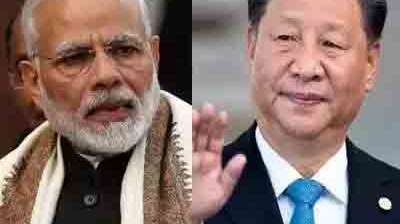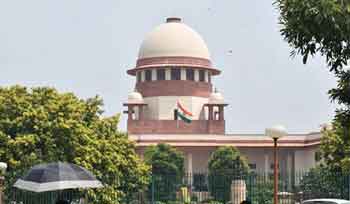INVC NEWS
New Delhi / Beijing : Explore the escalating tensions as India counters China’s provocative move to include Arunachal Pradesh in its map. Delve into the history, implications, and India’s unwavering response.
In the wake of the upcoming G-20 summit, tensions between India and China have once again come to the forefront, this time revolving around China’s audacious attempt to depict Arunachal Pradesh as its own. The Indian government’s response to this brazen move has been swift and unequivocal, asserting that Arunachal Pradesh is an integral part of India, and labeling China’s actions as nothing short of propagandistic. This article delves deep into the intricacies of this issue, highlighting the history, the context, and the implications of China’s propaganda, while also shedding light on India’s steadfast stance and its broader implications for regional dynamics.
A Historical Backdrop
Arunachal Pradesh, a picturesque northeastern Indian state, has long been a bone of contention between India and China. The roots of this dispute can be traced back to the era of British colonial rule when differing interpretations of historical boundaries laid the groundwork for future disagreements. China’s claims over Arunachal Pradesh stem from its historical association with Tibet, which it considers an autonomous region. India, on the other hand, emphasizes the ethnic, cultural, and administrative ties that bind Arunachal Pradesh to the Indian union.
China’s Propaganda Machinery
China’s geopolitical strategy has often been intertwined with its use of propaganda to advance its territorial claims. The release of the 2023 version of China’s ‘standard map’ is just one example of this calculated effort. This map not only includes Arunachal Pradesh but also encompasses other disputed regions such as Aksai Chin, Taiwan, and the South China Sea. The timing of this release, right before the G-20 summit and following discussions between Chinese President Xi Jinping and Indian Prime Minister Narendra Modi, raises suspicions about China’s true intentions.
India’s Defiant Response
The Indian government’s reaction to China’s propaganda has been resolute and unwavering. Official sources from within the Modi administration have unequivocally stated that China’s claims are baseless, and Arunachal Pradesh remains an integral part of India. This strong stance comes as no surprise, given India’s historical commitment to preserving its sovereignty and territorial integrity. It’s notable that the Indian response refrains from belittling China but rather focuses on reaffirming its own position, indicating a maturity in handling such delicate matters.
The Diplomatic Chessboard
While the immediate focus is on Arunachal Pradesh, it is important to understand the broader dynamics at play. China’s ambitions for regional dominance have often put it at odds with its neighbors. From its aggressive island-building campaigns in the South China Sea to border disputes with India and territorial claims with Japan, China’s expansionist tendencies are a cause for concern. This propaganda-driven approach to territorial claims not only strains diplomatic relations but also heightens instability in the region.
Implications for Human Rights
Beyond territorial assertions, China’s record on human rights has come under intense scrutiny. The plight of Tibetans, Uighurs, and other oppressed groups has garnered global attention and condemnation. This highlights a stark contrast between China’s territorial ambitions and its responsibility to protect the rights of its citizens. By drawing attention to these human rights concerns, India underscores the ethical responsibilities that accompany the pursuit of geopolitical objectives.
The Road Ahead
As China and India continue to engage on various fronts, the Arunachal Pradesh propaganda incident serves as a reminder of the complex challenges that characterize their relationship. Diplomatic channels must remain open and active, allowing both nations to address their concerns and find common ground. The global community watches closely, aware that stability in the Indo-Pacific region hinges on the responsible behavior of its major stakeholders.
In Conclusion
The unfolding narrative of China’s propaganda surrounding Arunachal Pradesh underscores the intricacies of modern geopolitics. As tensions rise and fall, it becomes imperative for nations to rely on diplomacy and dialogue to navigate these treacherous waters. India’s steadfast assertion of its sovereignty over Arunachal Pradesh sets a precedent for principled statecraft and serves as a reminder that while borders may divide, mutual respect and understanding can unite.













